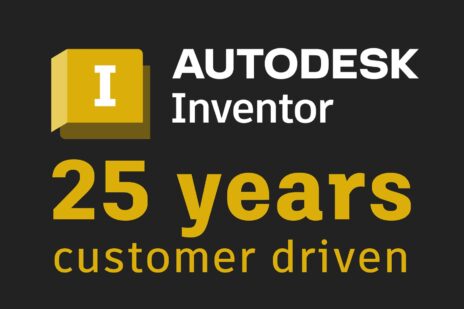
Autodesk and ProModel have teamed up to offer the best in factory design, optimization, and layout.Robust ‘real-life process and behavior’ simulation.
About a year ago, Trevor English wrote a great post about how to optimize your factory using ProModel simulator and Autodesk Factory Design utilities:
“Leveraging predictive analytics, you can quickly simulate your factory model and get process improvement insights, all with the click of a button. This easy-to-use solution provides designers and engineers with little or no experience in process modeling the most affordable tools.”
If you are more visual, Paul Munford also created this superb overview video that showcases ProModel Autodesk Edition’s capabilities to Factory Design Utilities (FDU).
The Goal
In one of my favorite books, ‘The Goal,’Dr. Goldratt was successful in making the process of ongoing improvement and the theory of constraints entertaining. In his book, he explains how to identify and reduce the impacts of constraints in manufacturing processes. I still read the book at least once a year–it’s my vacation go-to book. Every time I’m using Factory Design Utilities to visualize and/or optimize some factory designs and layout, I can’t help but think about the book and the possible bottlenecks that could occur.
Avoiding bottlenecks requires efficient planning. As you know, with Factory Design Utilities software (available in the Product Design & Manufacturing Collection), you can plan and validate factory layouts for the most efficient equipment placement to maximize production performance. Of course, Process Analysis –included in Factory Design Utilities–will help you makethe first pass at modeling, studying, and planning your layout. Still, if you wanted to take your factory design planning to the next level, you must consider discrete event simulation and its associated optimization. That’s where ProModel comes in.
Once you have the layout done in AutoCAD using Factory Design Assets, you can send it to ProModel using the ProModel tab directly in AutoCAD and run an animated simulation of your design. You can then run ‘What-If’ scenarios and automatically generate reports to display the optimized system’s KPIs.
From there, you can make the required changes to your AutoCAD model and sync it in Inventor to see the final layout in 3D.
Tell me Why
If you are like me, you want to know more. I wanted to talk to the team at ProModel and ask as many questions as they would allow. I wanted to quench my curiosity-thirst and put Autodesk’s/ProModel’s customers at the center. I was fortunate to have a conversation with Bruce Gladwin, PMP – SVP, Commercial Products at ProModel.
First of all, ProModel is a predictive analytics technology and services company that has been around since 1988. They use simulation-based solutions to help companies improve their existing processes or design new processes most efficiently–the first time. Bruce’s role is to oversee and lead the Commercial Products side of their business. This includes understanding customers’ needs, ensuring that the technology offerings meet those needs, and providing professional services to customers who lack the ability or the resources to gain full value from applying ProModel’s technology.
I asked Bruce, “what problem are you and the team solving?” He replied, “Our bread and butter is manufacturing simulation.” In other words, ProModel enables customers to identify and reduce–or eliminate–operational constraints in their current processes. This aligns well with most of our customers’ reality.
ProModel also helps run future-state scenarios on improved process designs:
We do this in significantly less time than could be done in the real world and without any risk of harm to existing processes.
Agility is fundamental for our customers, and we are often seeing them change and update their production layout to address their own customers’ needs.
What could the outcomes be?
Now that I knew ProModel’s Why, I wanted to know What their customers are trying to achieve. It turns out, productivity improvement is the primary reason customers use the technology.
Since we don’t have a ‘Planet B,’it is crucial to consider sustainable-manufacturing processes. We should explore manufacturing products through processes that minimize unwanted environmental impacts without forfeiting profits. Think of it like this: customers want to do more with less (less time, fewer resources, and less cost). ProModel helps customers build new processes virtually, from the ground up, and they also work to ensure that any new processes will meet their stated objectives (i.e., sustainable objectives).
Bruce had plenty–read PLENTY–of examples of time savings, cost savings, increased speed to market, increased accuracy, etc. But one example of an increase in speed to market stood out as being exceptionally impactful today. ProModel has a customer that won a contract to provide ‘home-kit’ testing for COVID-19. They were able to help that company with their goal to produce 200,000 units…every day!
Aligned values
ProModel’s technology is quite impressive and complements Autodesk’s manufacturing solutions well, and the values that drive their business align too. According to Bruce, “We are all about helping our customer become more profitable and to remain as profitable as possible for years to come.”
One-stop solution providers create value through integrated technology solutions. ProModel wanted to provide their customers with an integrated CAD/Simulation solution, and they wanted to find a partner who could help them provide additional value to the customers who have already invested much time and effort creating layouts and collecting the information necessary to create a “digital twin” of their operations.
“Autodesk development network has been very responsive to our needs, eliminating our fears of taking on a considerable effort to integrate ProModel into the Factory Design Utilities.”
Conclusion
Like Autodesk (1982), ProModel has been in the business for a while (1988).
They have been able to optimize processes from Call Centers all the way to Engine/Power Train lines. That means: they have a solution for you.
“There is so much additional value that exists in most manufacturing processes; it just needs to be discovered and maximized.”


